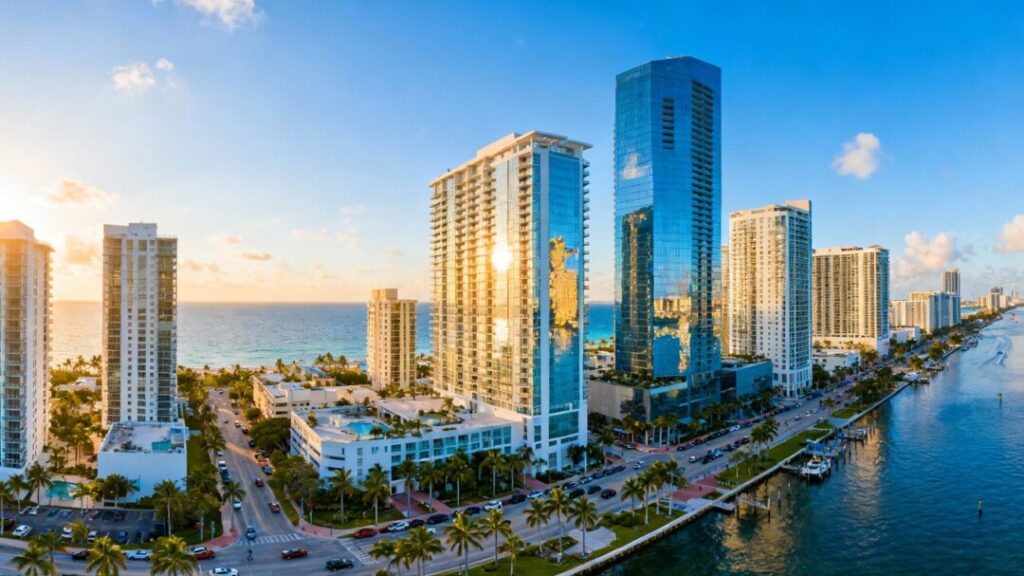Florida’s commercial real estate market is on fire in 2025 as investors pour billions into the state’s retail, mixed-use, and essential-service properties. New data points to robust portfolio transactions, signaling lasting confidence in Florida’s economic prospects and steady population growth.
Key Takeaways
- Recent portfolio sales in Florida exceed $500 million in value, led by national investment firms.
- High-profile acquisitions are concentrated in top-growth markets like Miami, Orlando, Tampa, and Palm Beach.
- The state’s favorable tax climate, population surge, and resilient retail occupancies drive investor demand.
Surge in Large-Scale Transactions
2025 has seen a wave of major portfolio deals across Florida’s top markets. Among the largest, a 10-property open-air retail portfolio—spanning over 1 million square feet and boasting over 91% occupancy—was acquired by Bain Capital and 11North Partners for $395.5 million. Most centers are anchored by trusted national grocers and daily-needs tenants, highlighting a preference for stable, necessity-based retail investments.
Other notable deals include FAVO Capital’s $190 million purchase of a luxury, 22-story mixed-use property in Hollywood, and Ram Realty Advisors’ acquisition of a 197,000-square-foot shopping center in Jupiter, backed by a lease with Whole Foods for the anchor space.
Economic and Demographic Drivers
Florida’s commercial property boom can be traced to several key factors:
- Population Growth: Since the start of the pandemic, South Florida counties like Palm Beach have added nearly 90,000 new residents. This influx, driven by lifestyle migrants, financial executives, and tech leaders, has transformed formerly seasonal cities into robust, year-round urban hubs.
- Tax and Business Climate: The state’s tax benefits continue to attract both residents and corporate relocations from other states. Major brands have announced expansions and new builds, reinforcing Florida’s lure as an investment destination.
- Mixed-Use and Essential Retail: Developers and investors are embracing mixed-use models and grocery-anchored retail locations, which deliver consistent customer traffic and remain resilient even as e-commerce grows.
Occupancy and Vacancy Trends
Prime retail corridors in cities like West Palm Beach, Orlando, and Boca Raton report some of the lowest vacancy rates on record—often falling below 3%. New developments, such as integrated office, residential, and retail districts, amplify walkability and lifestyle appeal, further pushing the demand for commercial spaces.
Notably, seven out of the newly acquired retail centers are anchored by Publix, and major tenants like Whole Foods, Trader Joe’s, and national fast-casual chains create steady, long-term revenue streams for property owners.
Investors Eye Long-Term Value
Institutional investors remain bullish on Florida’s future, citing strong demographics, high household incomes, and limited new retail supply in key metros. Joint ventures and long-term partnerships are becoming more common, with local developers and national capital working together to reposition assets and redevelop urban cores.
The unprecedented volume and scale of these deals reflect strategic confidence: Florida’s commercial real estate isn’t just surviving economic headwinds—it’s thriving, setting the stage for continued transformation as the state’s population and economic base continue to expand.
Sources
- Florida Sees Surge in Commercial Real Estate, | Florida Realtors.
- 10-Property open-air retail portfolio trades hands for $395.5M in Florida and South Carolina, JLL.
- FAVO Capital Acquires South Florida Mixed-Use Property for $190M, Multifamily Housing News.
- Ram Realty buys 197,000sqft mall in Florida from Orion Real Estate | News, IPE Real Assets.
- Bain Capital and 11North Partners Acquire Portfolio of 10 Open-Air Retail Centers Across Florida and South
Carolina, Bain Capital.


